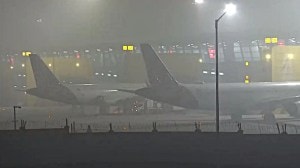Air Force seeks Bush’s approval for space arms
The US Air Force, saying it must secure space to protect the nation from attack, is seeking President Bush’s approval of a national-sec...

The US Air Force, saying it must secure space to protect the nation from attack, is seeking President Bush’s approval of a national-security directive that could move the United States closer to fielding offensive and defensive space weapons, according to White House and Air Force officials.
The proposed change would be a substantial shift in American policy. It would almost certainly be opposed by many American allies and potential enemies, who have said it might create an arms race in space.
A senior administration official said that a new Presidential directive would replace a 1996 Clinton administration policy that emphasised a more pacific use of space, including spy satellites’ support for military operations, arms control and nonproliferation pacts.
A Presidential directive is expected within weeks, said the senior administration official, who is involved with space policy and insisted that he not be identified because the directive is still under final review, and the White House has not disclosed its details.
With little public debate, the Pentagon has already spent billions of dollars developing space weapons and preparing plans to deploy them.
The Air Force believes ‘‘we must establish and maintain space superiority,’’ Gen. Lance Lord, who leads the Air Force Space Command, told Congress recently.‘‘Simply put, it’s the American way of fighting.’’ Air Force doctrine defines space superiority as ‘‘freedom to attack as well as freedom from attack’’ in space.
A new Air Force strategy, Global Strike, calls for a military space plane carrying precision-guided weapons armed with a half-ton of munitions. Lord told Congress last month that Global Strike would be ‘‘an incredible capability’’ to destroy command centers or missile bases ‘‘anywhere in the world’’. Pentagon documents say the weapon, called the ‘common aero vehicle’, could strike from halfway around the world in 45 minutes. —NYT



- 01
- 02
- 03
- 04
- 05




























